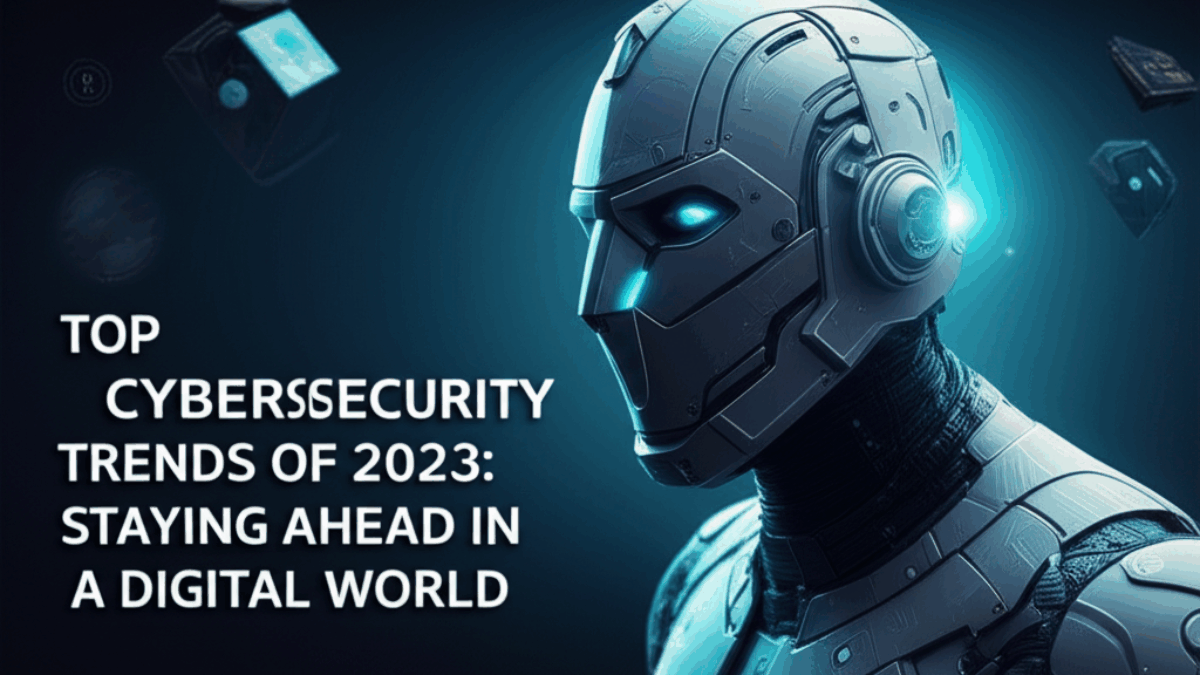In today’s digital landscape, cybersecurity has emerged as a critical focus for individuals, businesses, and governments alike. With increasing cyber threats, understanding the latest trends is vital for staying ahead. Although India is often recognized for its bustling IT sector, there are lesser-known events, influential figures, and cultural aspects that have shaped its cybersecurity landscape. This article explores top cybersecurity trends of 2023 while delving into the micro-history of India, showcasing events and leaders that have played a significant role in shaping security practices.
Table of Contents
- Introduction
- Cybersecurity Trends of 2023
- Rise of AI and Machine Learning in Cybersecurity
- Zero Trust Security Framework
- Regulatory Compliance and Data Privacy
- Growing Threat of Ransomware
- Supply Chain Vulnerabilities
- Cloud Security Challenges
- Mobile Security Risks
- Micro-History of Cybersecurity in India
- Early Developments in Indian Cybersecurity
- Influential Figures in Cybersecurity
- Case Studies of Notable Cyber Incidents
- Cultural Attitudes Toward Technology and Security
- Conclusion
1. Introduction
The digital world continues to expand, leading to increased vulnerabilities and cyber threats. As we navigate the challenges of 2023, understanding the emerging trends in cybersecurity becomes imperative. While global events dominate headlines, India has a rich and intricate history that reveals much about its current cybersecurity landscape. By elevating our understanding of micro-history, we can appreciate the broader context of these trends.
2. Cybersecurity Trends of 2023
Rise of AI and Machine Learning in Cybersecurity
Artificial intelligence (AI) and machine learning (ML) are reshaping the cybersecurity landscape by enhancing threat detection and response times. Automated systems can analyze vast amounts of data, identify anomalies, and respond to threats faster than human analysts.
In India, startups are leveraging AI to tackle local cybersecurity challenges, developing sophisticated tools that can predict and mitigate risks. Organizations like TechNerds are making strides in this area, focusing on unique threats faced in a rapidly digitalizing economy.
Zero Trust Security Framework
The Zero Trust model has gained traction as organizations realize that threats can originate from both outside and within their networks. This security framework operates on the principle of “never trust, always verify,” emphasizing enhanced identity verification, device monitoring, and strict access controls.
Indian companies are gradually adopting Zero Trust to protect sensitive data and comply with government regulations. This approach marks a significant shift in the traditional perimeter-guarding tactics, allowing Indian firms to respond to evolving threats proactively.
Regulatory Compliance and Data Privacy
The discussion around data privacy continues to grow, especially in light of incidents like the Cambridge Analytica scandal. India is in the process of finalizing its Data Protection Bill, which aims to regulate the collection and usage of personal information.
Organizations must comply with stringent regulations, which necessitates robust cybersecurity frameworks. This trend has prompted businesses in India to invest in compliance tools and engage legal experts to navigate the complex landscape.
Growing Threat of Ransomware
Ransomware attacks have surged globally, and India has been no exception. Small and medium enterprises (SMEs) are particularly vulnerable due to limited resources for cybersecurity.
Notably, the Indian cybersecurity incident involving MobiKwik in early 2023 showcases the financial implications of such attacks. Affected organizations are now compelled to adopt comprehensive backup strategies and security protocols, reflecting a broader trend in ransomware resilience.
Supply Chain Vulnerabilities
Supply chains are integral to any business operation but have become prime targets for cyberattackers. Events in 2022 highlighted vulnerabilities in supply chain security, encouraging companies to adopt strategies that secure their suppliers.
Indian organizations are increasingly conducting risk assessments on their supply chains and developing contingency plans to mitigate potential threats. This trend aims to foster a secure collaborative environment, critical for the growth of interdependent industries.
Cloud Security Challenges
With the shift to cloud-based platforms, security measures must also evolve. Organizations are struggling with securing data in the cloud while maintaining compliance with regulations.
In India, the hybrid work model has magnified cloud security issues, leading to the introduction of stringent guidelines by the government and private sector partners. This growing awareness is driving investments in cloud security solutions.
Mobile Security Risks
As mobile devices become primary computing tools, they pose unique security risks. Increased use of mobile payment solutions in India has attracted cybercriminals, leading to a rise in phishing attacks and malware targeting mobile platforms.
This trend is prompting Indian organizations to adopt Mobile Device Management (MDM) solutions and educate employees on mobile security best practices.
3. Micro-History of Cybersecurity in India
Early Developments in Indian Cybersecurity
India’s journey towards cybersecurity began in the late 1990s when the rise of the internet brought new challenges. The government established the National Cyber Security Policy in 2020, but earlier, various events hinted at the need for stronger cyber protocols.
One crucial event is the 2000 Cyber Law that aimed to promote legal recognition of electronic transactions and curb cybercrime. While still relatively nascent, this legislation marked a significant step towards recognizing the importance of cybersecurity.
Influential Figures in Cybersecurity
While many focus on global figures like Bruce Schneier or Eugene Kaspersky, India boasts its share of cybersecurity leaders. Noteworthy is Dr. Ajay Kumar, the former Secretary of the Ministry of Electronics and Information Technology, who played a critical role in shaping India’s cybersecurity policies.
Another emerging leader is Ritesh Bhatia, a cybersecurity expert based in Mumbai, who has worked toward raising awareness about safe online practices. These figures contribute significantly to India’s cybersecurity development and help in training a new generation of experts.
Case Studies of Notable Cyber Incidents
A closer inspection of specific incidents reveals the struggles and progress of Indian cybersecurity. The 2016 attack on the Indian Bank, which compromised sensitive data, led to significant legislative and organizational changes in how banks approach cybersecurity.
Another incident involved the WannaCry ransomware attack, which affected numerous Indian institutions, including hospitals. The response to such threats showcased a critical learning curve in crisis management and incident response.
Cultural Attitudes Toward Technology and Security
Culturally, India has displayed a fascination with technology while grappling with traditional security values. The youth engagement with technology often conflicts with the older generation’s skepticism. Awareness campaigns focused on cybersecurity are crucial in bridging this divide.
Efforts to educate the public about secure online behavior highlight societal attitudes towards technology. Grassroots movements aiming to inform citizens about safe internet practices can reduce the impact of cyber threats on a broader scale.
4. Conclusion
As we analyze the top cybersecurity trends of 2023, it becomes increasingly clear that vigilance and adaptability are critical in this ever-evolving landscape. From the rise of artificial intelligence to the challenges of supply chain vulnerabilities, these trends underscore the necessity for robust security measures.
Simultaneously, the micro-history of Indian cybersecurity reveals a tapestry woven with pioneering legislation, influential figures, and notable incidents that have shaped its current state. Understanding this backdrop enriches our comprehension of modern cybersecurity challenges and enhances our ability to anticipate and react to future threats.
In this digital era, fostering a collaborative spirit—among individuals, organizations, and governments—will be essential in combating cyber threats effectively. As we advance, embracing innovation while respecting our historical context will be paramount in ensuring a secure and resilient future in the digital world.
This exploration just scratches the surface of both contemporary cybersecurity trends and India’s intricate micro-history in this field. They remind us that understanding the past can provide valuable insights for navigating future challenges effectively.

